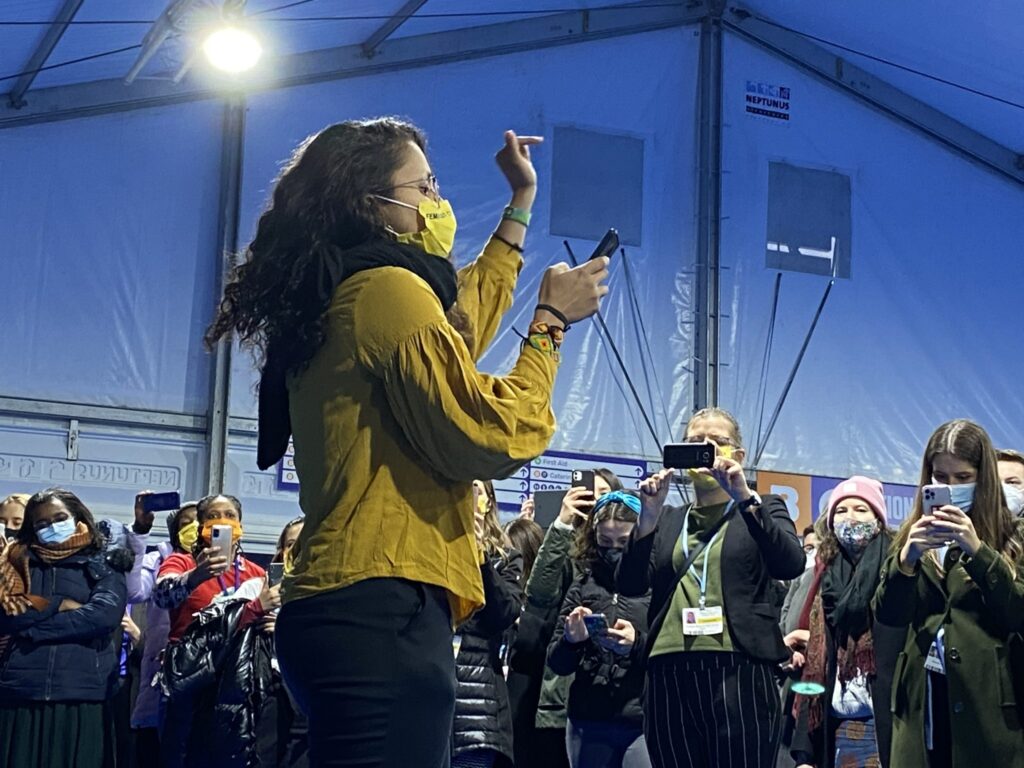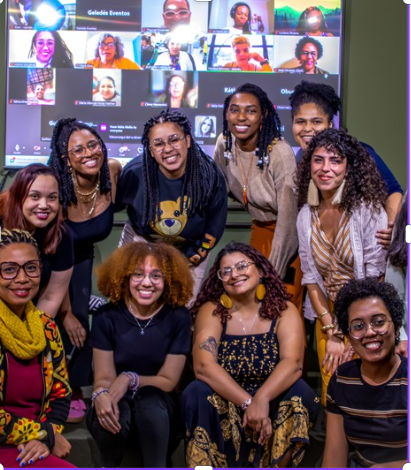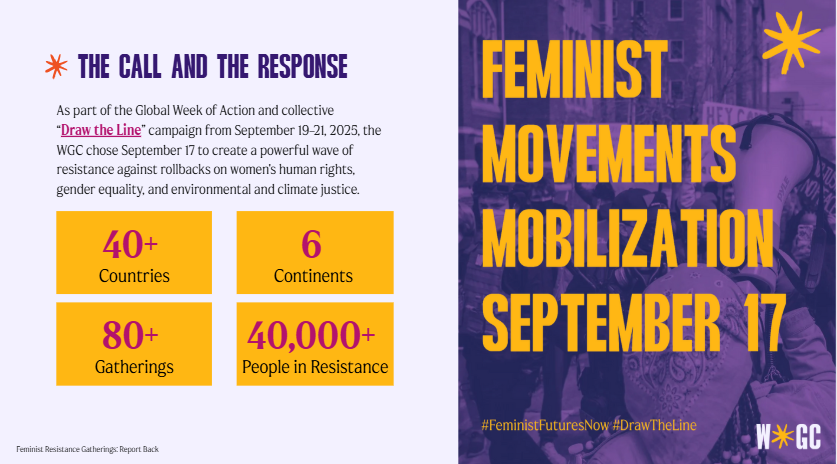
Gender Just Climate Action requires truth
12/11/2025

As part of the Global Week of Action and the collective “Draw the Line” campaign, the Women and Gender Constituency called for a powerful wave of resistance against rollbacks on women’s human rights, gender equality, and environmental and climate justice. What unfolded was as follows:

When rights are under attack and the planet is burning, feminists don’t just resist – we reimagine and we rebuild.
From the flood-prone regions of Bangladesh to the streets of Brazil, from community centers in Kenya to virtual spaces connecting feminists across the MENA region, women and gender-diverse people came together to share stories, build solidarity, and demand action. These weren’t just meetings, but also acts of resistance, moments of healing and hope, and spaces of strategic planning on the road to COP30.
The gatherings took many forms. In Patuakhali District, Bangladesh, 400 women and girls formed human chains and rallied together, their message clear: redirect military spending toward climate resilience and peacebuilding. Each participant received a sapling, and 400 trees were planted as living symbols of hope and resilience. As Rahiama Sultana Kazal from AVAS reflected:
“Grassroots women highlighted the direct impacts of climate change — such as flooding, cyclones, river erosion, and salinity— that threaten their livelihoods and disproportionately burden women… The active participation of 400 women and girls created a sense of unity, confidence, and ownership of the movement, linking local struggles with global advocacy.” Rahiama Sultana Kazal, AVAS
In Homabay, Kenya, 100 people gathered for a Dialogue Day that centered the voices of teen mothers, young women, and women with disabilities. They shared testimonials, engaged in storytelling circles, and worked together on feminist power mapping exercises. The event created something special: a space where those most impacted by intersecting crises could speak freely and be heard. David Rabuor from the Community Action for Health and Development captured the significance:
“Connections: Strengthened solidarity and collaborations with other feminist networks locally and globally. Emotions: Shared healing, empowerment, and collective hope for advancing women’s rights. Issues: Raised visibility of challenges facing women in Homabay, including gender-based violence, lack of economic opportunities, and barriers to political participation.” David Rabuor, CAHED
In Brazil, the gatherings moved from global to local. In Belo Horizonte, eight women from eight different organizations came together to map climate vulnerabilities in their city. Their analysis led them to identify an unexpected but crucial priority: free bus fare. This demand linked emissions reduction with women’s safety, recognizing that public transportation is both an environmental and a feminist issue.
Meanwhile, in São Paulo, 100 participants gathered for a “circle of knowledge” that explicitly connected climate justice to the upcoming Black Women’s March. Ester Sena from Instituto Geledés explained the power of this connection:
“It was a very important event to build connections with a major initiative in Brazil—the Black Women’s March… The march highlights the struggles and leadership of women of African descent who are on the frontlines of climate change.” Ester Sena, Instituto Geledés

These gatherings were not just about solidarity, they were strategic. Across the MENA region, 100 feminists convened to develop unified demands for COP30, the upcoming UN Climate Change Conference. Through both digital platforms and in-person meetings, they collected inputs from across their region, ensuring that feminist voices would be coordinated and powerful in international climate negotiations.
In Uganda, young women took their demands directly to decision-makers. At a roundtable in Jinja, Girls for Climate Action presented a young ecofeminists manifesto to ministers and negotiators. Twenty-two participants engaged in direct dialogue with those in power, a rare opportunity for grassroots voices to shape policy.
September 17 proved something that feminist organizers have long known but that the world often overlooks: feminist climate justice movements are organized, strategic, and ready. Grassroots women and gender-diverse people don’t just have concerns, they have clear, concrete demands backed by deep analysis and lived experience. They must be at the center of climate conversations, not on the margins.
The gatherings also revealed a hard truth: what limits participation isn’t lack of commitment but lack of resources. Organizers worked pro bono, navigated funding constraints, and still showed up. Imagine what this movement could accomplish with adequate support.
Perhaps most powerfully, these gatherings demonstrated that intersectionality isn’t just theory, it’s lived practice. Teen mothers in Kenya, Dalit women in Bangladesh, Black women in Brazil, displaced women in Palestine, Indigenous women in Peru: they all brought their full identities and experiences to these spaces. Their analysis was sharper and their solutions more comprehensive because of it — and indicates why an intersectionality framework should shape climate action.
The feminist resistance gatherings stand as a day of joy and rage, rebellion and community, conversation and music. Here’s to many more to come!